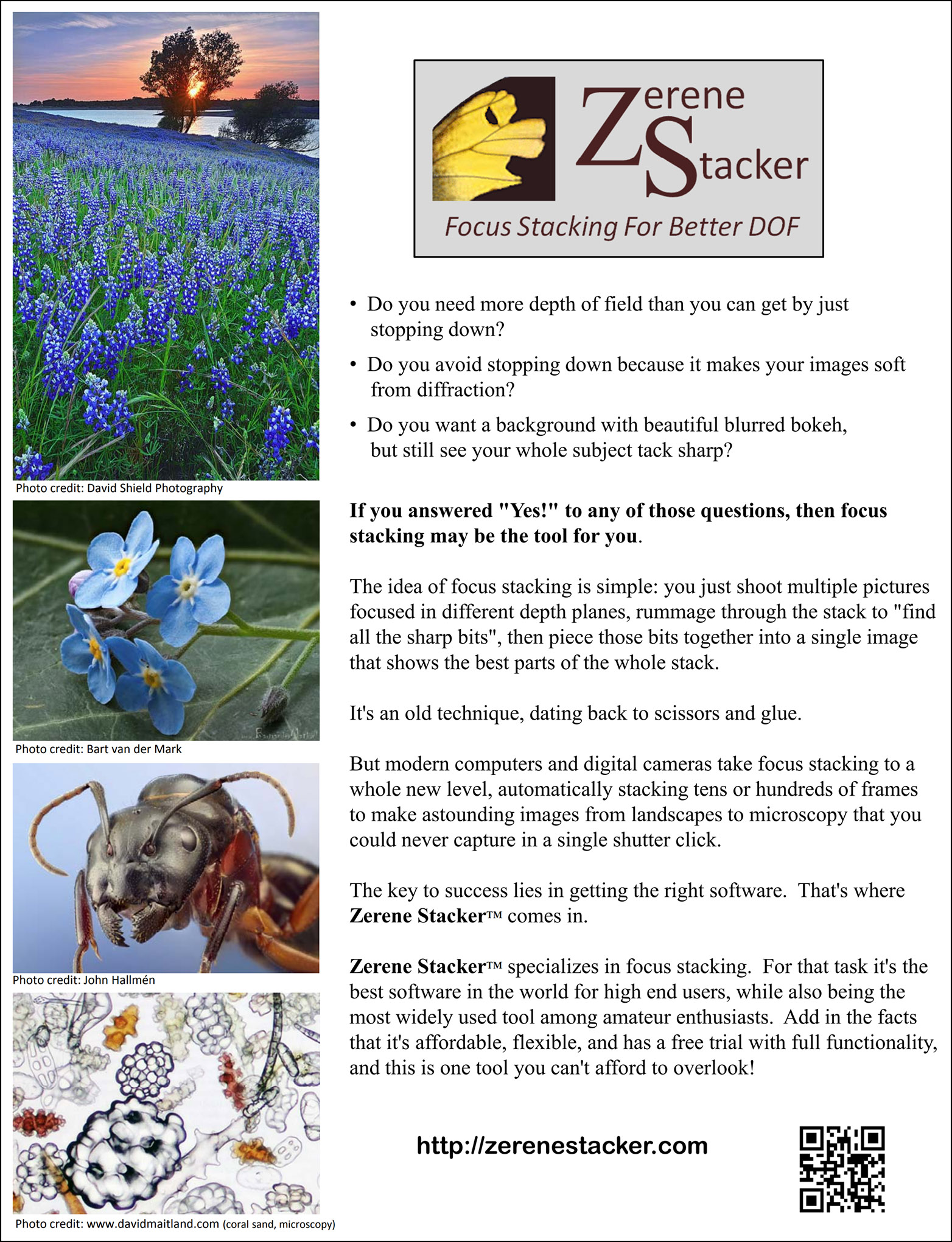
Purchasing or Troubleshooting Questions Should Be Directed to the Question Thread
#ZERENE FOCUS STACKER FREE#
Feel free toĬheck out the many other photosharing subredditsĢ. If you just want to share an image you've taken, you're welcome to post in /r/photographs, our sister photo sharing sub. Topic/question rather than the focus of the post. The image should be used to support an overall broad and nonspecific Posting images is only allowed as self-post using the photo as an example for the discussion, to either begin a conversation aboutĪspects of the example or to ask a photography-related question. Official FAQ and Wiki Please be sure to read the FAQ before posting. Photography as an art and post things that would be of interest to other photographers. This is not a good place to simply share cool photos/videos or promote your own work and projects, but rather a place to discuss Light Setup: 2X Yongnuo 560-IV with diffusers Lens: Lomo 3.7x Microscope Objective on a set of extension tubes and cheapest bellows in the market./r/photography is a place to politely discuss the tools, technique and culture of photography.

I used the same machine (i7/12GB Ram/SSD Hard Drive) for every step. Although there were not any other processes during that time, the results are still should be considered as approximate. Pipelineįirst of all, Helicon Focus has a big advantage over Zerene Stacker in terms of pipeline. Helicon Focus supports raw pipeline with DNG input and output. Zerene Stacker does not have any raw support yet (which makes me surprised). So I stuck with 16 bit TIF export to test Zerene Stacker. With the 16 bit TIF pipeline there is actually no pixel data loss. In fact, this format can hold more color data that a regular DSLR can shoot. Since file size of DNG is much less and make the format easier to load/reload it speeds up the whole pipeline, not only import/export.Įxporting timings for 66 images from Lightroom with the plug-ins: DNG file can hold the whole of your data with a optimum size and it can also hold the metadata. Wow… I was expecting DNG to be faster but more than two times? I wasnt expecting that. Lets see how they do when actually processing the images. Helicon Focus offers 3 different focus stack methods, which you can retouch and combine them. These are Method A, Method B, and Method C. Methods A and B has Radius and Smooth settings, where Method C does not have any setting. The logic is to collect all data and use the best parts of each. PMax’s algorithm is very similar to Method C (Pyramid) in Helicon. PMax and Method C are relatively faster to calculate compared to the other algorithms.

By cleaner, I dont mean better, but most of the time the results from these methods are usable without any combination. Although the picture is more contrast and it creates something like a halo effect especially on the highlights. Method C and PMax creates an extraordinary job on very thin parts like hair follicles. It also compensates better the Lens breathing effect (or the gaps occurred because of literally moving the camera in this case) compared to the other algorithms. Other methods (DMap in Zerene Stacker and Method A/B in Helicon Focus) creates less noisy, better quality results. They tend to have a wider contrast range too. Ideally, one would want to use most parts of the image from DMap or Method B results.


 0 kommentar(er)
0 kommentar(er)
